Header photo by cartoonist and writer Bob Eckstein
Protecting nature isn’t an easy assignment, especially in the midst of the growing specter of climate change. The Nature Conservancy, founded in 1951, is a leading organization undertaking the daunting task of safeguarding our fragile environment. Operating projects in 69 countries, the Nature Conservancy works to counteract pollution, restore wildlife, and reduce the impact of humanity on ecosystems worldwide.  offMetro sat down with Michael Treglia, Urban Spatial Planner with the New York City branch of The Nature Conservancy, to learn more about sustainability efforts and access to nature in NYC.
offMetro sat down with Michael Treglia, Urban Spatial Planner with the New York City branch of The Nature Conservancy, to learn more about sustainability efforts and access to nature in NYC.
1. How are we New Yorkers doing in terms of our carbon footprint?
New Yorkers are generally well-informed and savvy when it comes to our decisions about our environmental impact. Recent public opinion research commissioned by The Nature Conservancy shows most New Yorkers believe climate change is a serious problem and want to take action.
New York City generally does well in terms maintaining a low carbon footprint for a few reasons. For example, many New York City residents live in apartments – shared walls reduce energy required for heating and cooling, as less is lost through outside walls and windows. Similarly, city dwellers tend to rely on public transportation or walk to their destinations, which is much more efficient than driving everywhere.

This online map visualizes the carbon footprint of people in different regions. It is clear that the 5 boroughs have relatively low carbon footprints, compared to surrounding suburban areas.
2. How can we improve?
Though New York performs well in terms our carbon footprint, we can always improve. People can opt to: take public transportation, bike, carpool, or drive a fuel-efficient vehicle; eat a “low carbon” diet of mostly vegetables; be mindful of your purchases (the environmental impacts of fast fashion have been in the news lately); and try to generate less waste or explore composting. The Conservancy has compiled a list of tips from “Everyday Environmentalists,” and readers can estimate their individual carbon footprint with our carbon calculator.
3. You use geospatial data to map green spaces in NYC. What are the goals of green spaces in urban areas?
Green spaces of various types provide numerous benefits in cities, both to people and ecosystems. For example, designated parks provide people with places to get outside, enjoy nature, and exercise, even if it’s just a short walk. Green spaces can also retain rainwater, easing the burden on municipal storm sewer systems. Vegetation also reflects heat from the sun, reducing a phenomenon known as the Urban Heat Island effect (in which cities are generally warmer than surrounding, less-developed areas). Vegetation and associated permeable surfaces (such as soil) also help dissipate heat through evapotranspiration. Green spaces also provide habitats for a myriad of species. Pollinators and birds use small spaces such as vegetated medians, and salamanders, snakes, and frogs occupy larger parks, as do other animals.
Green spaces are also found outside of parks and planted medians. More innovative implementations of green spaces include rooftop installations (as “green roofs” or “living roofs”), spaces along walls of buildings (” green walls” or “living walls”), and additions in parking lots to help manage stormwater (e.g., bioswales).
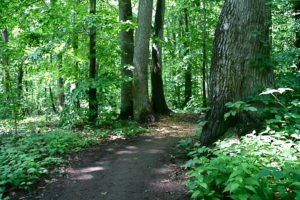 4. What are some hidden green gems within NYC?
4. What are some hidden green gems within NYC?
I grew up in Staten Island and have to point out the incredible network of trails we have there as part of the Greenbelt. These trails go through a variety of habitats, with the top of Moses Mountain offering picturesque views. Jamaica Bay Wildlife Refuge in Queens and Marine Park in Brooklyn have interesting coastal habitats where visitors can observe an incredible diversity of shorebirds, horseshoe crabs, and even brackish-water turtles called Diamondback Terrapins. I’ll also point out Inwood Hill Park at the northern end of Manhattan, which has a mixture of upland forests, salt marshes, and spaces for recreation.
5. What about green spaces outside the city? Do you have recommendations for places nearby where urban dwellers can enjoy nature?
One of my favorite spots to explore is The Conservancy’s Mashomack Preserve on Shelter Island, referred to as the “Jewel of the Peconic” after the Peconic Bay at the eastern end of Long Island. This site is one of the few places on Long Island to observe nesting bald eagles. It also has large, intact salt marshes, countless osprey, and a diversity of upland habitats to explore.
6. Do you have any tips for experiencing nature while remaining respectful of it?
Always plan ahead – call the parks or preserves with questions you might have, and look online for rules and guidelines for your activities there. Those rules are generally established to protect and maintain the local environment and wildlife as well as for your own safety. Make sure that you are going in a time of year when trails are open and not restricted. And of course, leave nothing behind. Trash can change dynamics – for example, it may cause animals to associate people with food, increasing human-wildlife conflict. Litter, either ingested by or snagging animals, can also cause health problems. A good set of principles to follow can be found on the Leave No Trace website.
If you have them, remember to bring binoculars and a camera. Binoculars will let you view wildlife close-up while maintaining a safe distance and avoiding disturbing animals. A camera will capture the scenery and can help you record any vegetation or animals you want to ID without taking anything from the park. And again, leave as little impact on the environment as possible, taking only memories and photographs.
—
As The Nature Conservancy’s site declares:
“The world we depend on depends on us. Let’s help people and nature thrive together.”
Along with your own personal habits we also recommend making a direct donation to The Nature Conservancy.
Charlotte Leszinske is a writer newly arrived in NYC after a short stint in Paris (but is still a Californian at heart). When not searching for half-priced plane tickets she likes to explore bookshops and breweries in the outer boroughs.

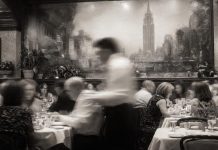

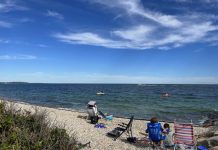





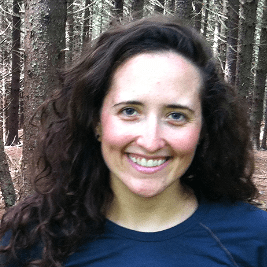 Sarah Knapp is a Brooklyn based entrepreneur whose love for the outdoors and community building led her to the October 2013 creation of OutdoorFest. She has a BA in History, is a Wilderness First Responder and a NY state hiking, camp and boating guide. Her proudest achievement to date is reading the Aeneid in Latin.
Sarah Knapp is a Brooklyn based entrepreneur whose love for the outdoors and community building led her to the October 2013 creation of OutdoorFest. She has a BA in History, is a Wilderness First Responder and a NY state hiking, camp and boating guide. Her proudest achievement to date is reading the Aeneid in Latin. 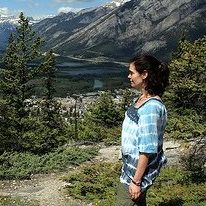 Allison was one of our first top writers and Chief Editor but is no longer working with offMetro. Allison is a native New Yorker, who has lived in Rome, Tuscany, Melbourne, Toronto and Los Angeles. She frequently contributed travel pieces to Family Travel Forum, using her own children as guinea pigs as they travel the globe. She never missed a chance to sample local delicacies, as her love for travel goes hand-in-hand with her love for food and wine.
Allison was one of our first top writers and Chief Editor but is no longer working with offMetro. Allison is a native New Yorker, who has lived in Rome, Tuscany, Melbourne, Toronto and Los Angeles. She frequently contributed travel pieces to Family Travel Forum, using her own children as guinea pigs as they travel the globe. She never missed a chance to sample local delicacies, as her love for travel goes hand-in-hand with her love for food and wine. 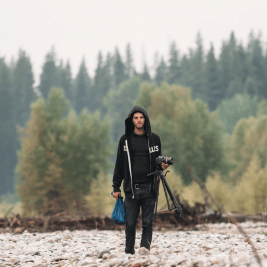 Josh Laskin is a freelance travel writer and photographer based in the White Mountains of New Hampshire. When he is not at work or on the road, you can find him in the mountains snowboarding, climbing, hiking, fly fishing, mountain biking, and eating bagel bites.
Josh Laskin is a freelance travel writer and photographer based in the White Mountains of New Hampshire. When he is not at work or on the road, you can find him in the mountains snowboarding, climbing, hiking, fly fishing, mountain biking, and eating bagel bites. Annie is a travel writer, environmentalist, and surfer based in Venice, CA. She heads up our West Coast team, keeps our grammatical errors in check, and makes sure our California writers always have a plan for their next adventure. Follow Annie’s travels @annelisemcb.
Annie is a travel writer, environmentalist, and surfer based in Venice, CA. She heads up our West Coast team, keeps our grammatical errors in check, and makes sure our California writers always have a plan for their next adventure. Follow Annie’s travels @annelisemcb. Carly Pifer is a freelance writer who has been known to follow whims inspired by romantic movie scenes or colorful street style shots to India, Japan, Tunisia and Argentina. After stints living in Seoul, Boston, Paris and Los Angeles, writing and searching for something intangible, she landed somewhat steadily in Brooklyn and has begun to find inspiration in her more immediate surroundings.
Carly Pifer is a freelance writer who has been known to follow whims inspired by romantic movie scenes or colorful street style shots to India, Japan, Tunisia and Argentina. After stints living in Seoul, Boston, Paris and Los Angeles, writing and searching for something intangible, she landed somewhat steadily in Brooklyn and has begun to find inspiration in her more immediate surroundings.  Kate E. O’Hara is a New York based freelance writer and photographer who loves all things food—especially the people who make it and market it. Her writing aims to capture the essence of the food experience; the stories that go well beyond a plate of ingredients. In addition to her love of food, Kate is also known to have a hankering for red wine and craft beer. You can also find Kate on Instagram
Kate E. O’Hara is a New York based freelance writer and photographer who loves all things food—especially the people who make it and market it. Her writing aims to capture the essence of the food experience; the stories that go well beyond a plate of ingredients. In addition to her love of food, Kate is also known to have a hankering for red wine and craft beer. You can also find Kate on Instagram